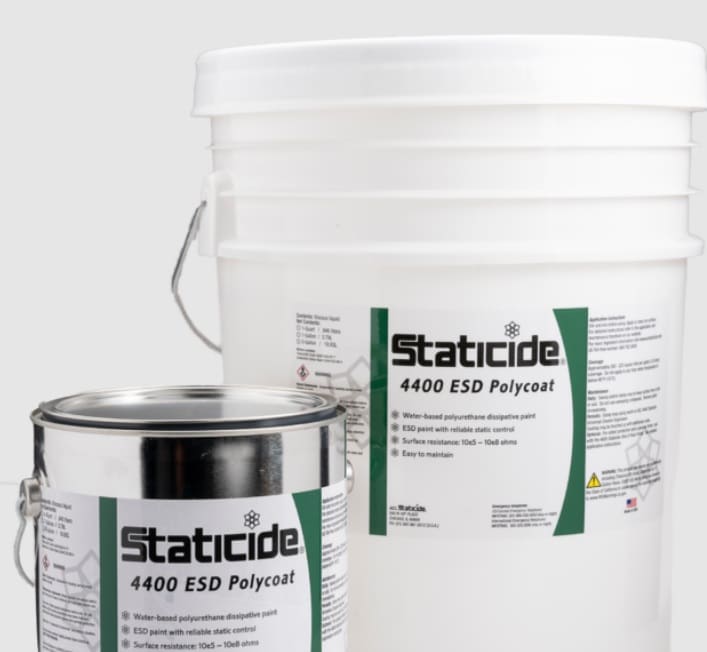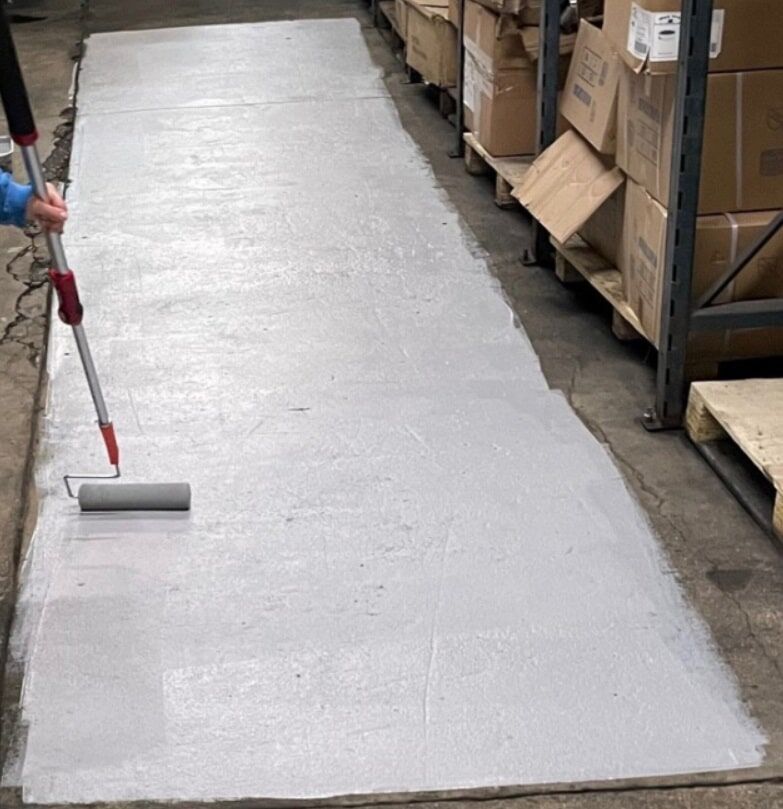No products in the cart.
Return To ShopACL 4400 ESD Polyurethane Anti-Static Floor & Wall Paint | ANSI/ESD S20.20-2020 | Zero VOC | Reinforcing Fibers
4400 ESD PolyCoat Polyurethane Anti-Static Paint offers superior static control for floors and walls with remarkable durability. The water based 4400 offers zero voc’s, delivering consistent resistance reading between 100 kilohms to 100 megaohms regardless of humidity. Surface resistivity measures from 105 to 108 ohms and conforms to ANSI/ESD S20.20-2014 when tested according to ANSI/ESD STM7.1
Once applied, this single part system will complete a circuit by providing a swift and safe path to ground when grounding with a recommended one copper grounding strip for every 1,000 sq’ of project surface.
The 4400 with its reinforcing fiber construction offers a physically tough high solids polyurethane, durable ESD static controlled surface. It is a zero VOC, water based formula resistant to yellowing and UV fade, dirt attraction and withstands alcohol, oils, gasoline, brake fluid, anti-freeze, flux and most common electronic chemicals. Can be applied to wood, concrete, drywall, VCT and previously painted surfaces.
The 4400 is an easy to apply one part system that can be applied by 1/4″ nap lint free or foam roller, sprayer or brush. The 4400 is available in a standard medium gray and dark gray color with satin finish and comes in 1 gallon and 5 gallon pails.
Two-inch-wide copper grounding strips are available. The copper tape has 1.4 mil thickness (2.6 mil thickness with the conductive adhesive backing).
PRIMER: For applying directly to ceramic tile, linoleum or asbestos mastics, cutback and carpet glues with minimal preparation consider our Perfect Primer Sealer.
TOPCOAT: Optional: None required. For a glossy surface or additional physical protection as a low cost sacrificial option, use the 4000 Acrylic Static Dissipative Clear Floor Finish
We offer the option to include a Two-inch-wide copper grounding strip for grounding to earth grounds. Copper is 1.4 mil thickness (2.6 mil thickness with the conductive adhesive backing). Recommend at least 1 grounding strip every 1,000 sq’ of project surface area. See the guide: HOW TO GROUND ESD COATINGS
For ESD projects requiring a wider selection of colors on a broader range of surfaces, see our 6700 ESD Premium Anti-Static Paint which comes in 9 colors in an easy to apply one part coating.
For floor surfaces subject to heavy use including forklift and pallet jack traffic, see our GroundWorx Ultra Coating System which includes a high performance 2 part 100% solids epoxy basecoat and high solids urethane topcoat for excellent ESD anti-static control in a physically demanding environment.
For more information on anti-static floor systems, see our video library.
Where is 4400 used?
- Electronics manufacturing
- Electronics assembly areas
- Contract Manufacturing
- ESD Worspaces
- Static Sensitive Warehousing and Data Centers
Why 4400 ESD Anti-Static Floor Paint?
- Provides 100% anti-static control, even at low levels of humidity
- Conforms to ANSI/ESD S20.20-2020 when tested according to ANSI/ESD STM7.1
- Static dissipative: 105 to 108 ohms
- Water based with Zero VOC- 0 g/L
- High physical durability with reinforcing fibers
- Resists yellowing and UV color fading.
- Easy soap and water cleanup.
- Designed for concrete, wood, drywall, VCT and previously painted surfaces
- Available with Satin Finish in a Medium Gray and Dark Gray color
- Withstands alcohol, oil, gasoline and most common electronic chemicals
- Biodegradeable – Non-hazardous | Non-flammable

